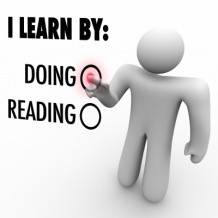
–by Rachel Luckenbill, Instructional Consultant for TAs at the Center for Teaching Excellence
A few years ago when teaching UCOR 101, “Thinking and Writing Across the Curriculum,” I decided to give my students a break from the daily midsemester routine of reading and discussing sample argumentative essays. My classroom needed more energy, so I created a learning activity designed to help students meet the following goals: craft a clear, feasible, reasonable solution to a problem; understand criteria by which to evaluate an argument; and engage in meaningful dialogue about conflict resolution. It was a smashing success. My students had fun and connected with the principles they had been slow to grasp through reading and discussion only. Here’s a brief summary of the activity that has now become a staple feature in my composition classroom:
At the start of class I introduce the following scenario, one that I’ve designed because of the likelihood that students have encountered something similar to it:
Your local elementary school baseball team has had several years of winning seasons. The whole town is proud, but no one is prouder than the parents of the players. In fact, the parents have been so involved that they are more vocal during games than are the players. They shout instructions from the stands and occasionally address the coaches with concerns after games. This year the team is struggling. They’re winning some games but not all. Their record isn’t the problem, though. After all, little league athletics is all about developing skills and learning how to be a good sport when winning and losing. The parents, however, are the problem. Instead of just yelling encouragement and instructions, they’re berating players loudly from the bleachers. They’re also verbalizing their critiques of the coaching staff and waiting in the parking lot afterwards to confront them about their techniques. Sometimes they even leave the stands and approach the players with mid-game advice. The level of disturbance has increased dramatically so that the parents are impeding the educational and athletic progress of the team.
As a member of the school board, concerned both for the students’ academic and athletic growth, you want to help solve the problem. What solution can you propose that will allow parents to participate in their children’s athletic endeavors while allowing coaches the room to instruct?
I then appoint two students as judges and divide everyone else, the “school board members,” into groups. I task the two judges with creating a list of criteria by which to evaluate the proposals and then ask each group to craft a clear, feasible, and persuasive solution to the problem. Wanting students to both take the activity seriously and really feel the change in routine, I send each group to deliberate “confidentially” in a nearby empty classroom or hallway, and then I visit each one to answer questions and offer guidance.
Once deliberation is complete, everyone returns to the room where each group has 3 to 5 minutes to present their solution to the rest of the class and answer questions from the judges. Once the judges select and announce a winning team, I debrief the activity with a large group discussion that ties the experience back into the lesson’s goals.
The physicality of moving about, the brain work of crafting a solution that will have a live audience, and the task of cooperating with teammates all contribute to making an activity like this one yield significant learning gains.
I offer this as an example of experiential learning in a composition classroom but such an activity is easily transferable to other disciplines. Imagine nursing students dividing up into teams of caregivers who each have to offer a solution to a complex patient problem or groups of history students explaining to city planners why a historic property should not be demolished. Whatever the content of the exercise, active learning that engages students in “real world” problems and offers a chance to simulate or practice solving those problems can increase engagement and comprehension in the classroom.
Now it’s your turn to share. Have you tried similar exercises in your classes? What worked? What didn’t?
